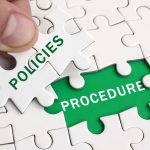
All you need to know about Data Cleansing.
- Detect corrupt data
One of the most basic ways to get started with data cleansing is by monitoring errors in the system and observe the trend of corrupt data by checking their source. This would help streamline the process.
2. Standardisation
This step would really help get rid of the unnecessary entries in the system. Standardising the point of entry is very crucial to manage data as having several data points could make data processing more complex.
Validating data is important to consider once you cleanse the existing data and streamline it. Digitising the data validation process would help save a lot of time and costs when compared to manually doing the same.
Identifying replicas helps get rid of unnecessary copies and will make life easier for data analysts and processors. It cleans a major chunk of the data and gets rid of irrelevant information stored in the system.
Data Analysis is the best way to check the quality of your data. This step not only estimates what kind of data should be stored and what should be erased, it also helps determine the health of the data collected by your organisation.
Please note that all opinions made on this blog should be treated as a guide and not legal advice.





